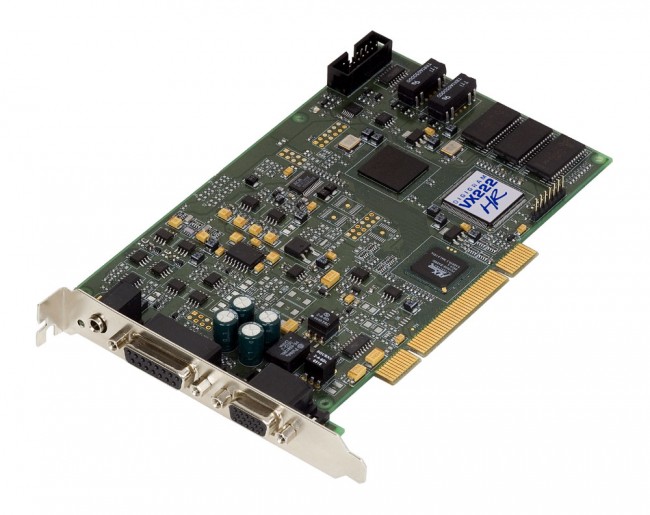Wireless LAN technology has been around for quite a while. Point-to-point 2.4 and 5.8 GHz spread spectrum hardware has also been around for some time. These systems operate in the ISM bands at relatively low power levels and are license free. There are several different makes and models, however, they all have some similar specifications. Most have DS-1 (T-1) or ethernet 10 base T or 100 base T 802.3 architecture. Some are field configurable for either format.
The advantage of using 802.3 ethernet is the availability of ethernet sound cards and the possibility of making inexpensive audio to ethernet A/D converter. However, if a station is currently using telephone company DS-1 service, then they likely have the audio to DS-1 multiplexers on hand.
I have used the Axxcelera point to point system as an inter-city relay for a satellite downlink. Axxcelera is owned by Moseley, which has a long history in the STL business. The point-to-point system has an indoor unit, which has the RJ-45 ports, and an outdoor unit, which has the RF section and an integrated antenna. The two units are connected via Cat 5 cable (be sure to use UV resistant cable) through a power injection port. The newer units do not need the power injection port. The system gain is about +46 dBm and the claimed effective range is 20 miles. I’d suspect it to be somewhat less than that with the integrated antenna. There is also an N connector for an external antenna, making the outdoor unit a MMA (Mast Mounted Amplifier).
The indoor unit came configured with four 10 base T ports, which we reconfigured for DS-1 service. We connected a QEI CATLINK T-1 mux with several 7.5 KHz audio channels and one control channel connected to a broadcast tool DSC 3264 (Starguide satellite receiver channel controller) that allowed the station to change channels on the fly. It took some doing, but in the end, the system worked well. The path was about 1/2 mile through downtown buildings, it was line of sight but did not have full Fresnel clearance. I never heard of any dropouts.
The other system that I have used is the ADTRAN TRACER. This system is different in that it does not have an integrated antenna, an external antenna is required. We installed this over an eight-mile path using two six-foot grid parabolic dishes (Radio Waves G6-2.4NF) on 2.4 GHz. The primary configuration is a rack-mounted indoor unit with either four or eight 802.3, E-1, or T-1 ports. These ports are not field configurable. The antenna connector is a type N. There is also a split configuration available; an indoor unit with the T-1 ports and an outdoor MMA. This setup is best used where transmission line lengths would create prohibitive losses. MMA’s are not my first choice in these systems, there are too many things that can go wrong when active components are mounted high above ground level.
This system replaced two Telephone company T-1 lines and is used as an STL for two stations and an inter-city relay for a satellite downlink site. It also extends the office LAN (802.3 ethernet) to the transmitter site where a backup audiovault server lives. This is accomplished through a T-1 port using an ethernet to T-1 bridge.

ADTRAN also created a path analyser spreadsheet.
The license-free aspect of these system makes them easy to deploy. There are several frequency plans available and the paths are fairly robust. In highly congested areas, however, interference may become an issue. Of course, because they are unlicensed, frequency coordination would be a real problem. Axxcelera has the ExcelFlex which is a unit requiring a license that can run in any frequency band from 6-38 GHz







I would caution the use of this for primary STLs, but site monitoring and other secondary uses may be OK. ISM “license free” bands can be real trouble especially in urban areas. A VPN, I believe would be mandatory in any case.
Another company I have heard of is RADWIN; one engineer is using a wireless 200Mbit system with the original Moseley T1 equipment running along side. This gives them the best of both worlds, able to flexibly use the barix and the original gear without paying for the T1.